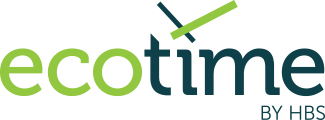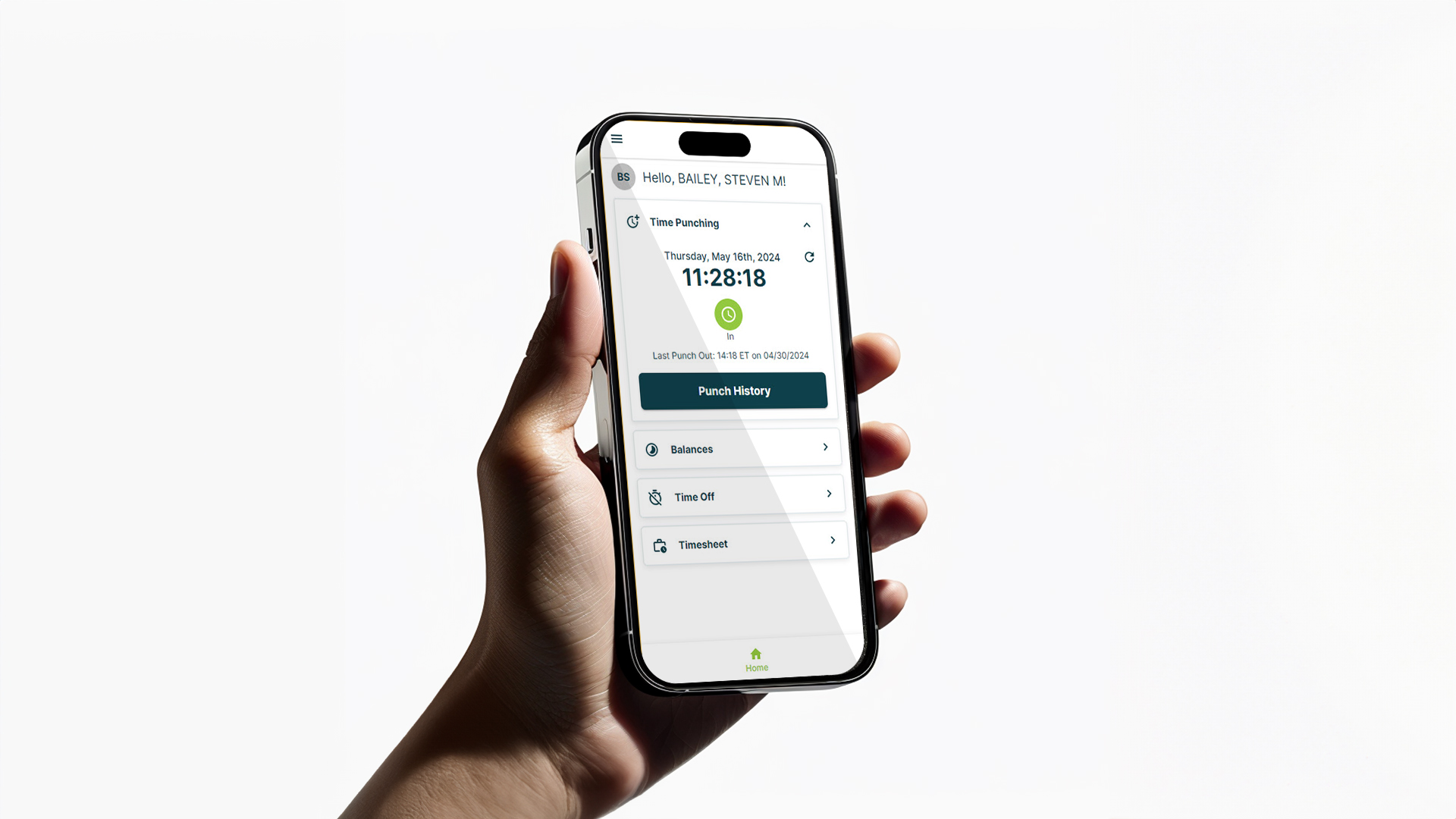Ensure That Your Time and Attendance System Has All the Functionality You Need
A time and attendance system is an essential tool for employee attendance and time tracking that is ultimately used in creating paychecks. It allows companies to accurately record and monitor the hours that employees work. This helps to improve workforce productivity, reduce labor costs, and ensure compliance with labor laws.
There are multiple forms of data entry that can be used. Many employers use on-site time clocks to ensure that workers are present at the worksite or to provide a solution if users do not have access to computers. Alternatively, web-based entry does not require employees to punch into a physical time clock. However, it does require the presence of a computer, tablet, or other mobile device and a reliable internet connection. This method is useful for businesses where employees have access to devices or where a remote or mobile workforce exists. Many businesses look for vendors that offer both types of entry.
Although a time and attendance management system tracks employee time and attendance, the right system can provide even more value to your business. To maximize the value of your investment, you need a system that can meet your requirements today and have the flexibility to meet future requirements as well. The right vendor can make a difference.
1. Does the Time and Attendance System Have the Flexibility to Support Your Workflows?
You need your time and attendance system to be highly configurable to meet today’s and tomorrow’s requirements. A solution that allows you to create user permissions, profiles, reports, and notifications, should allow you to customize and suit your unique needs. In the end, you want a system that can adapt to your organization rather than software that forces you to follow some predefined process.
For example, there are several important features that can greatly impact the efficiency and accuracy of payroll processes. One such feature is the ability to quickly make reporting or pay code changes, which is essential in keeping up with the ever-changing needs of a business. Retroactive adjustments also play a critical role in ensuring that employees are paid correctly for their time worked. Also, it is important that the system is able to quickly make accrual policy changes, which is particularly relevant for businesses that offer vacation or sick time to their employees. The system should be able to handle additional pay or union contract changes without difficulty. Finally, flexible or varying work schedules are becoming increasingly common, and the time and attendance system should be able to accommodate these changing schedules to ensure that employees are accurately compensated for their time worked.
Ask vendors if making these changes requires a change order, which costs more money, or if your organization’s system administrator can implement them. When making a purchasing decision, many employers focus on features. For example, can the software do this or that? Although this is important, what is often overlooked is the system’s ability to be flexible and adapt. You want to invest in a solution that can easily be configured to suit your changing needs.
2. Does It Give You the Level of Accuracy and Automation You Need?
When it comes to payroll, it’s important to get it right the first time. Errors lead to conflicts with employees and time wasted correcting issues, which can be avoided with the right solution. This is why you need a time and attendance management system that accurately calculates employees’ hours worked, vacation time, or other balances. Pay particular attention to the system’s capability to automate your rules and apply them to the right people in the correct order. In addition, a system with workflows to catch errors early is vital to lowering overall costs.
For example:
- Is there a limit to the number of pay rules or accrual buckets that can be created?
- Can the system automate financial allocations?
- Is there a limit to the number of categories employees can use to document their time?
- Can the system limit dropdown values by employee so they only have options relevant to them?
- Can the system warn employees/managers when entries are out of range (i.e. approaching overtime, missed punches, scheduled hours mismatch)?
- Are there automated workflows for time off requests and FLMA tracking?
Accuracy in time and attendance data is critical in providing administrators and managers with valuable insights into their employees’ costs and performance, enabling them to make informed decisions about their workforce. With accurate data, managers can identify issues, reward top performers, optimize staffing levels, and ultimately improve their business operations.
3. Is the Solution Cloud-Based?
Cloud-based time and attendance systems have changed the game. By utilizing a cloud-based system, you can save money in various areas, such as reducing errors in payroll processing, and reduce hours necessary to manually complete attendance and payroll tasks. According to recent data, 25% of companies are still using spreadsheets in their time-tracking management. By using a cloud-based system, you can eliminate manual processes and the risk of human error and provide your team anytime, anywhere access to your time-tracking application. In addition, many cloud-based solutions offer the latest security protocols, disaster recovery processes, and remove the cost of maintaining servers and upgrades.
Cloud-based systems also allow employees who don’t work their entire shift on-site, such as utility, construction, and energy workers, to clock in and out via a tablet or other or another mobile device. This data is tracked in real-time, giving your management team total visibility into employees’ status and the hours worked in a pay period. Managers can then gain the flexibility to approve employees’ time, along with time off and overtime requests, from anywhere.
If going to the cloud meets your strategic goals, don’t sacrifice flexibility. Ensure you don’t go with a “one size fits all” solution.
4. Does It Have the Ability to Handle Your Complex Environment?
Every organization has different needs when it comes to time management. For example, you may need a system that can manage different employees with collective bargaining and union contracts as well as hourly vs. salary employees on different pay cycles. You may need to go even further by finding a system that can handle varying regulations, such as California rules regarding meal penalties and daily overtime. Your organization may need to consolidate data from different systems through multiple integrations. Lastly, you may need to have your employees document their hours to the right job, cost center, or some other organization-defined value.
Regulations and requirements are constantly changing. If you don’t have a flexible system that can handle complexity, you could quickly outgrow your system and minimize your investment. Your time and attendance management system needs to be able to easily differentiate between total hours worked, how many hours were overtime, if the hours were at a regular pay rate, and if any hours were PTO, sick, or another accrual bucket. And do this in the most intuitive, automated way.
5. How Would Clients Rate the System Provider’s Customer Service?
A time and attendance management system can be complex, and technical issues can arise. Having ongoing customer support ensures that businesses have access to technical experts who can help resolve any problems that may occur. However, most companies will send you to an automated system (or overseas) when you call for assistance. You need to invest in a system backed by a company with knowledgeable support representatives who know your industry inside and out. This support can help businesses minimize downtime, reduce the risk of errors, and keep their operations running smoothly.
Additionally, remote troubleshooting allows the customer service representative to diagnose and promptly resolve any issues so that you can get your operations back up and running swiftly if any problems occur. And with a team-based customer support model, you’ll have access to more than one individual who knows your unique business needs. When doing your research, ask existing clients to rate their experience.
How Ecotime Can Solve Your Time and Attendance Challenges
Ecotime by HBS was designed with the complexity of your organization in mind. Our time and attendance management system has all of these capabilities and more so that you can say goodbye to manual processes and paper time sheets. We allow you to get your payroll in on time, every time.
Our knowledgeable, U.S.-based customer service team goes above and beyond in answering your questions by providing ongoing technical support. We’ll connect you with an expert who knows your industry and configuration inside and out. You never have to speak to an automated system again. Request a demo today, and see how Ecotime can solve your time and attendance challenges.












